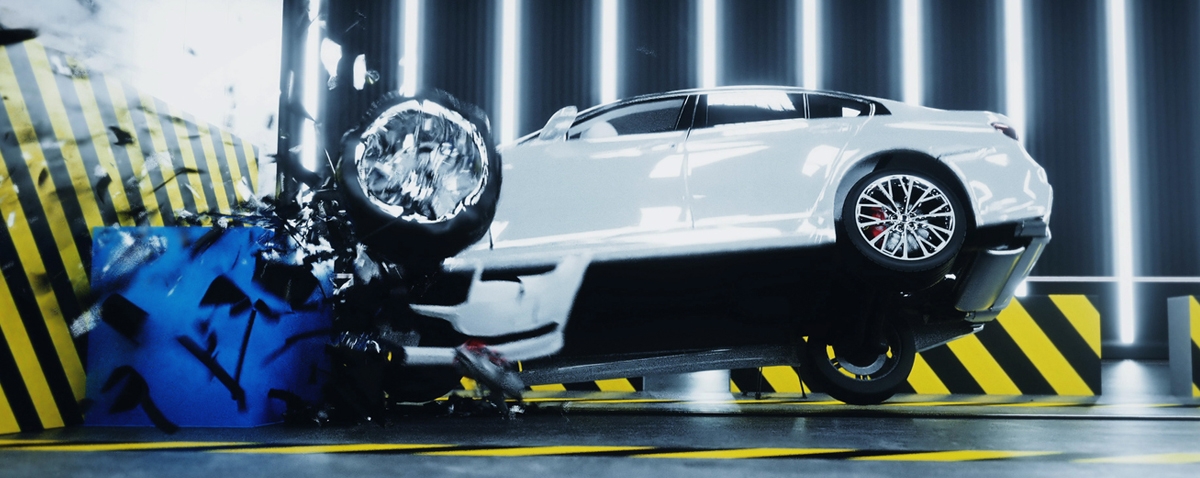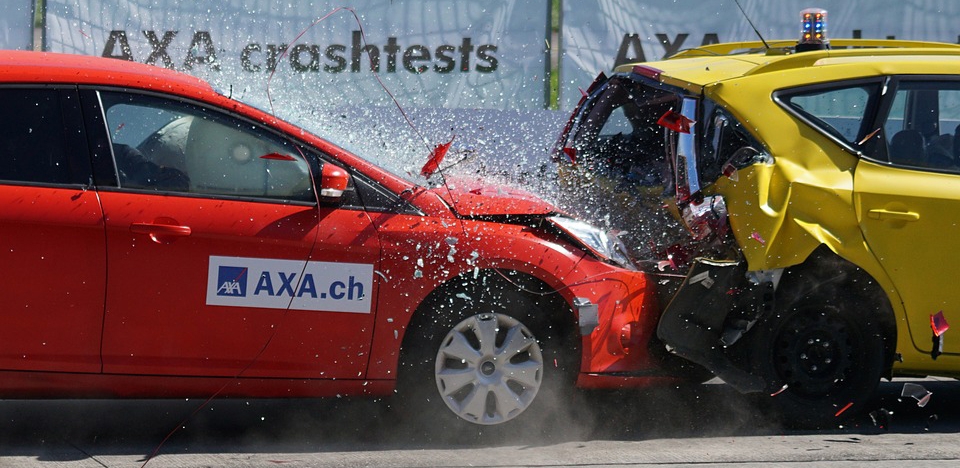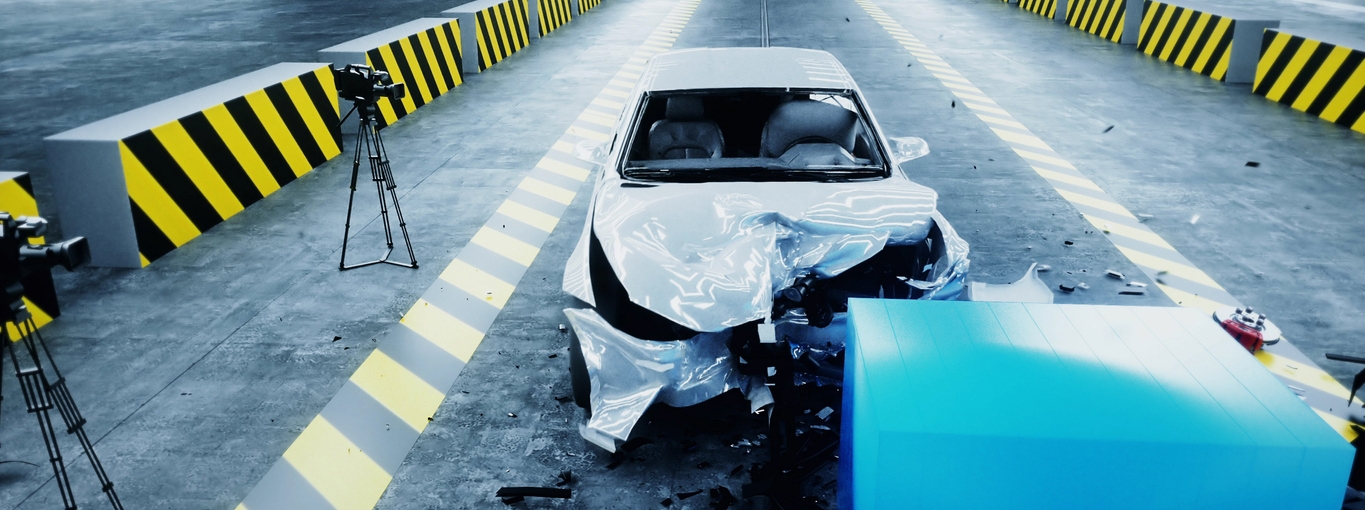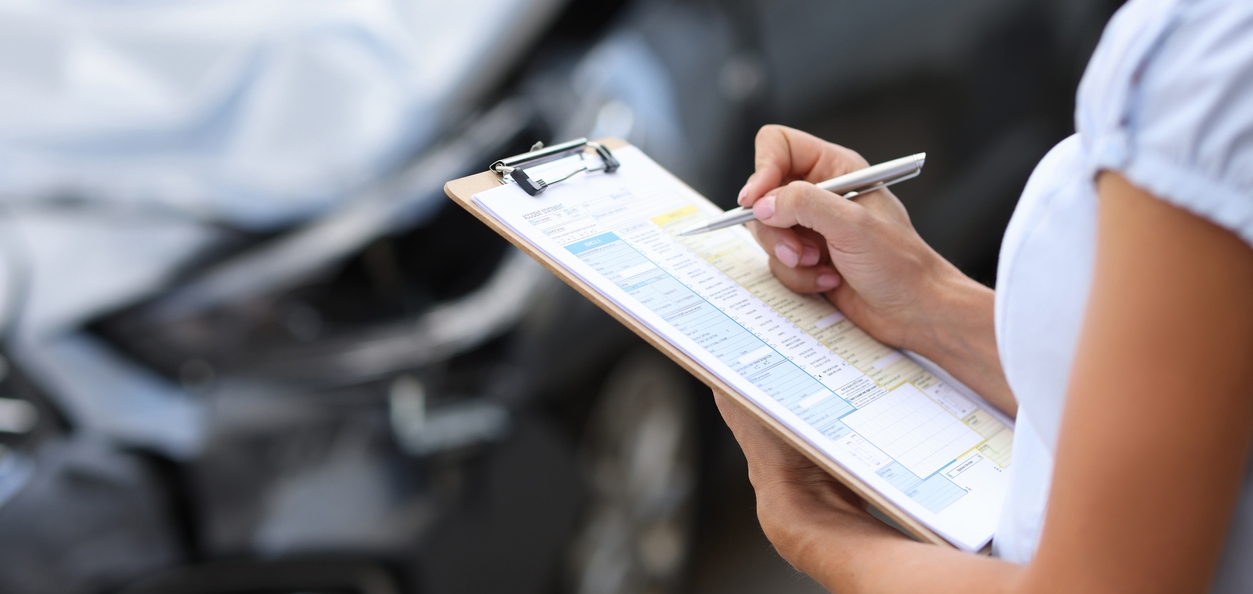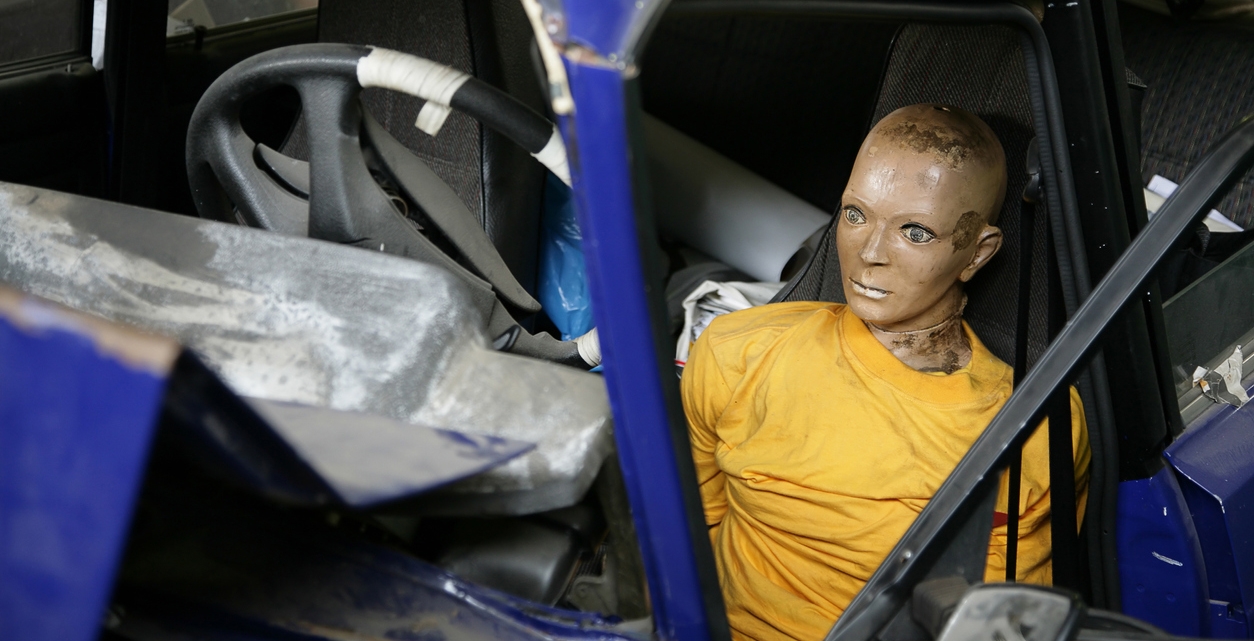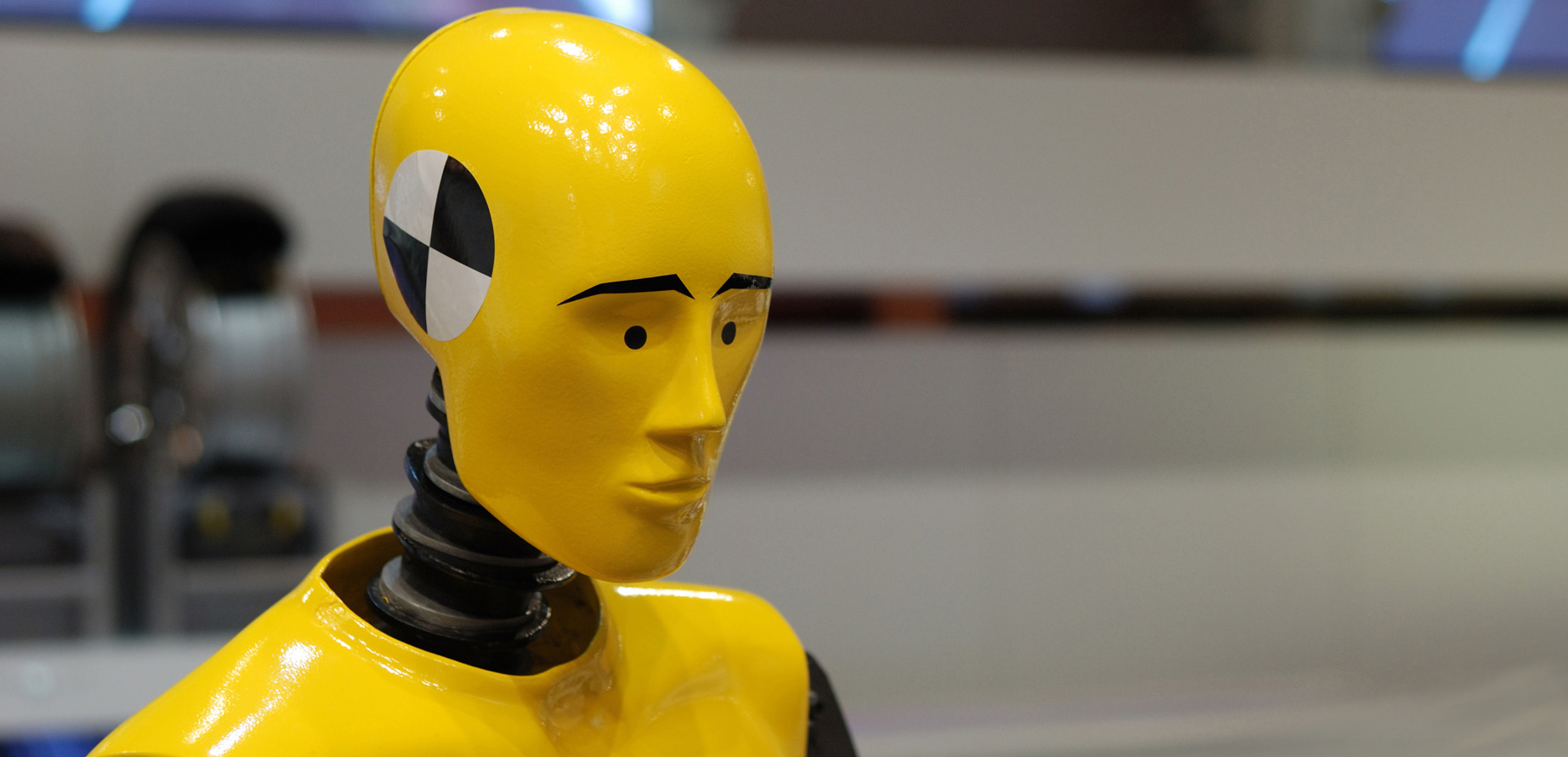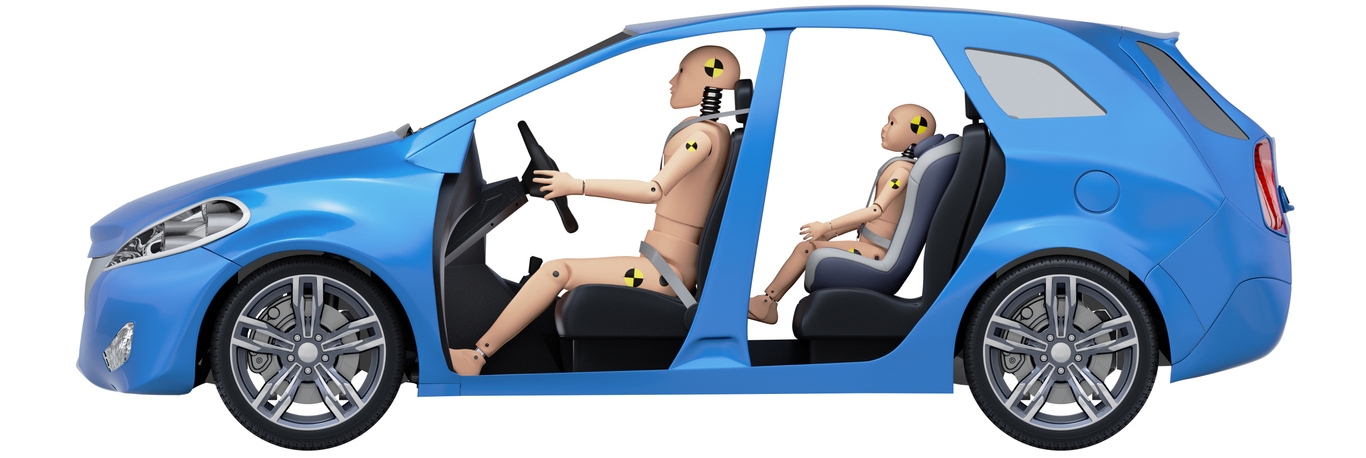Background
When buying a car, there are many things to consider, such as the brand, model, type of transmission, price, and many other features. However, aside from looking into what a car or vehicle looks like and the cool features it offers, another important thing to consider when choosing a car is how safe it is for you. Today, newer cars offer many different safety features. These include airbags, tire pressure monitoring systems, adaptive cruise control, collision warning, adaptive headlights, and more.
Many cars today have a lot of safety features to prevent a collision, such as a brake assist, forward-collision warning, and automatic emergency braking. There are also some cars that feature shatter resistant glass in case of collision or crash. However, even if the car you are looking into buying has all of these features, that is not enough to ensure that it is safe to drive. Another thing that you should consider is its car crash ratings.
The crash ratings of a car can help you find the safest makes and models if you intend to purchase a vehicle soon. These ratings are obtained by the use of crash tests, which show how safe a car is in actual collisions, such as frontal impacts and rollovers. The tests are done to make sure that the safety features of the car are accomplishing their intended purposes. If you are interested in learning more about this, read on as we are going to deep dive into understanding car crash ratings.
The History of Car Crash Testing
Most car models in the United States today are crash-rated. The scores and ratings given by the Insurance Institute for Highway Safety (IIHS) and National Highway Transportation Safety Administration (NHTSA) are essential for buyers to make educated buying decisions. But have you ever wondered where the ratings for auto safety crash tests came from?
The truth is that crash tests were not always part of the design and evaluation of new automobiles. No manufacturers believed that intentionally wrecking a car would be a useful technique to evaluate passenger safety or structural integrity for a long time. But thanks to General Motors, crash tests started in the 1930s.
Even though cars have been around since the beginning of the 20th century, it was only decades later that crashing cars became part of designing them. In the beginning, a car’s structural integrity was not taken into account, provided it ran smoothly and did not disintegrate on the road. But in 1934, a manufacturer decided to evaluate how a car handled collisions by tenaciously crashing the car into an obstacle. In the same year, General Motors held its first barrier test at the Milford Proving Ground in Michigan.
The test involved rolling an empty car down a hill to accelerate it or having the driver get out while it was driving, causing the car to crash into a concrete barrier. The early tests focused less on protecting passengers and focused more on studying how they can make cars sturdier and more resilient. That was why seatbelts were not widely offered until later and why crash test dummies were not introduced until the 1940s. [1]
As more manufacturers and companies started designing and releasing their own automobiles, crash tests became a routine part of development. However, most companies, especially in other countries, did not have their own private testing grounds to crash their prototypes. Therefore, testing on public streets was not uncommon but also quite dangerous. To make sure that crash tests were done systematically and safely, intercession was necessary.
In the mid-20th century, the creation of different organizations led to the systematization of automobile testing and safety measures. These organizations include the American Automobile Safety League, the World Forum for Harmonization of Vehicle Regulations, and the United States Department of Transportation. At the present time, the Insurance Institute for Highway Safety and the National Highway Transportation Safety Administration strictly oversee safety evaluations on production vehicles, sharing results with the public. [1]
Who Conducts Car Crash Tests?
Crash tests or crash demonstrations are usually part of marketing bulletins to help customers trust a manufacturer’s product. It’s because when a car has a 5-Star Safety Rating, it means that it is safer. Automakers often do their own crash testing. However, the Insurance Institute for Highway Safety (IIHS) and the National Highway Transportation Safety Administration (NHTSA) are two organizations whose reputations in the industry can be relied upon to produce scores and ratings for automobiles. [2]
Insurance Institute for Highway Safety
The IIHS is a non-profit group that is funded by insurance companies. It conducts tests to evaluate the crashworthiness of a vehicle, as well as its crash mitigation and crash avoidance, through a rating system of good, acceptable, marginal, or poor. There are different tests that are conducted by IIHS to determine the crashworthiness of a car. [2] These are:
Frontal Overlap Crash Tests: In this test, a series of front crashes are simulated where only part of the car makes contact with the barrier. There is the moderate overlap test wherein the car travels at 40mph into a barrier only 40% of the vehicle’s width, offset at the side of the driver. Aside from that, there are also small overlap tests where the barrier is only 25% of the width of the car. [3]
Roof Strength Test: In this test, the safety of the passengers is evaluated in the event of a rollover by pushing an angled metal plate down into the roof at a slow, constant speed. The force needed to crush the roof of the car is used to get the strength-to-weight ratio of the vehicle. [2]
Head Restraint and Seat Tests: In this test, seats and head restraints are tested to allow the organization to see how well a vehicle will protect passengers from injuries such as whiplash. This is because neck sprains and strains are the most commonly reported injuries in United States auto insurance claims. During the test, the seats of the car are removed and fixed to a moving steel sled. The sled is moved to simulate the fast acceleration and deceleration forces that happen during an accident. [3]
National Highway Transportation Safety Administration
The NHTSA is a government organization that uses a star system from one to five stars in four tests. [1] These tests include:
Frontal Crash Test: This test is used to simulate a head-on collision. It involves colliding a car directly into a fixed barrier at 35mph. This way, it represents crashes between two similar-sized vehicles. [3]
Side Barrier Crash Test: This test simulates an intersection collision wherein a car is hit broadside by another car. During the test, a stopped car is hit with a 3,015-pound moving barrier on the side of the driver at 38.5mph. [3]
Side Pole Crash Test: This test simulates a crash into a telephone pole. The car is angled at 75 degrees and pulled into a pole near the driver’s door at 20mph. [3]
Rollover Resistance Test: This test is more of a calculation as it estimates the likelihood that a car will tip during a sudden swerve. [3]
Each of these tests is scored with a five-star ranking system, with all tests averaged out for an overall star rating on the crashworthiness of the car. The NHTSA is the only group that rates rollover resistance in its testing. Aside from that, it also rates tires and car seats. [2]
What are the Car Crash Ratings?
In both the NHTSA and IIHS rating scales, the definition of high and low performance depends on the specific test being conducted. Uncovering the exact metrics may take some research, but the results speak for themselves. Based on IIHS, a driver of a car that is rated good in the moderate overlap test is around 40% less likely to die in a frontal crash compared to a driver of a vehicle that is rated poor. And for side crash tests, that number can jump up to 70%.[3]
The NHTSA Car Crash Ratings
Vehicles are categorized by NHTSA by class and curb weight, or the weight of a car with standard equipment as well as coolant, fuel, and air conditioning at max capacity. [2] The cars are further subdivided into the following categories [5]:
- Passenger cars mini (PC/Mi) (1,500–1,999 lbs.)
- Passenger cars light (PC/L) (2,000–2,499 lbs.)
- Passenger cars compact (PC/C) (2,500–2,999 lbs.)
- Passenger cars medium (PC/Me) (3,000–3,499 lbs.)
- Passenger cars heavy (PC/H) (3,500 lbs. and over)
- Sport utility vehicles (SUV)
- Pickup trucks (PU), Vans (VAN)
The five-star safety rating system is as follows:
– Five stars (highest)
– Four stars
– Three stars
– Two stars
– One star (lowest)
You can also look at the NHTSA’s 5-Star Safety Ratings Program Timeline below for more details on how they have come up with the tests and ratings they have today:
NHTSA’s 5-Star Safety Ratings Program Timeline |
|
| Year | Event |
| 1970 | The Highway Safety Act created the National Highway Transportation Safety Administration (NHTSA) and specified its goals, which included lowering the number of fatalities, serious injuries, and financial losses brought on by auto accidents. |
| 1978 | Started using information from crash test dummies to test and rate the frontal impact protection of vehicles. |
| 1993 | Started utilizing the 5-Star Safety Ratings system to assist customers in making knowledgeable safety decisions when purchasing new automobiles. |
| 1996 | Started evaluating and testing the side crash protection of automobiles. |
| 2000 | Started putting cars through tests to see if they could withstand rollover collisions, which are riskier than other sorts of collisions. |
| 2003 | To better mimic rollover crashes in the real world, rollover testing have been revised. |
| 2004 | Launched SaferCar.gov (now NHTSA.gov) so that consumers could look up 5-Star Safety Ratings and other crucial information about highway safety in an one location. |
| 2006 | New car window labels must include information about the 5-Star Safety Ratings. |
| 2010 | Added an overall vehicle score and a list of cutting-edge safety systems to the 5-Star Safety Ratings. |
| 2013 | Rearview video systems have been added to the list of suggested technological solutions to aid in preventing backover events. By 2018, all cars will come equipped with this capability as standard. |
| 2015 | Announced plans to upgrade its 5-Star Safety Ratings program and push automakers to build vehicles with improved crash protection and innovative collision avoidance technologies in order to save more lives and lessen injuries to passengers and bystanders. |
| 2016 | Automatic emergency braking systems have been added to the list of suggested technologies to help prevent or lessen the impact speed of rear-end collisions beginning with automobiles from model year 2018. By 2022, automakers promised to make it a requirement for all vehicles. |
The IIHS Car Crash Ratings
The crashworthiness scores and headlight test results are broken down by the IIHS as:
– Good
– Acceptable
– Marginal
– Poor
Aside from that, it also breaks down crash avoidance and mitigation for vehicles that have front crash prevention systems as:
– Basic
– Advanced
– Superior
In addition to that, the IIHS also gives two awards to vehicles with exceptional ratings to single out those that score well in the tests. [2] The awards are:
Top Safety Pick: Vehicles that perform well in all five crashworthiness tests and receive an advanced or superior grade in the front crash prevention test are eligible for this award.
Top Safety Pick+: This is IIHS’s highest honor, granted to cars that perform well in all five tests, receive an advanced or superior grade for front collision prevention, and have acceptable or good lighting ratings. [2]
What are Crash Test Dummies and How Do They Work?
Crash test dummies are devices used in studying the effects of frontal crash impacts on cars and assessing internal organ, rib, and spine effects during side collisions. They are essential for automotive crash testing and rating and are considered real-life savers as the chances of a particular car model being more road-worthy or safe rely on them.
The dummies imitate the weight, proportions, dimensions, and articulation of a human body. They are used to gather data about the dynamic behavior of the dummy while simulating vehicle impacts or collisions. The data collected from the crash test dummies include the crushing force generated during the impact, body torque, impact velocity, folding action, bending direction, and deceleration values during the collision. [4]
Crash test dummies have been used since 1949. A dummy was also made in 1950 by Samuel W. Alderson of the Alderson Research Labs, and it was used to perform crash tests for both aircraft and motor vehicles. There are also various types of crash test dummies being used today. These are:
Side Impact Dummy: It gets the data about spine and rib deceleration, along with those resulting from compression of the chest cavity.
Rear Impact Dummy: This type of crash test dummy is made to gather information when it comes to whiplash. It also helps designers in designing reliable head and neck restraining devices.
Child Dummy: This type of crash test dummy is used to test the reliability of child restraining devices in cars, such as seatbelts and airbags.
Facial Impact Dummy: This one is an advanced crash test dummy named Thor, which has more human-like features, such as the spine and pelvis. Its face has multiple sensors that reliably help in the evaluation of facial impacts at a high level.
A dummy is put inside the test vehicle and fastened to a seat before being marked on the skull or the knees during the automotive crash testing. The majority of dummies have leather skin, and metal probes are put on their knees to check for correct punctures.
The dummy has about 50 data channels inserted from its head to its ankles, allowing it to record up to 30,000 data items for each collision that lasts between 100 and 150 milliseconds. The data are originally kept in the dummy’s chest-based data repository. Once the crash test is complete, the data is then downloaded into a computer. [4]
In the United States, the Hybrid III dummy is used. These dummies contain three types of instrumentation, such as accelerometers, load sensors, and motion sensors. [6]
Accelerometers: This device measures the acceleration in a certain direction. It is used in determining the probability of injury. The accelerometers are placed inside the dummy’s head, chest, pelvis, legs, feet, and other parts of the body to measure acceleration in different directions. [6]
Load Sensors: These sensors measure the amount of force on various body parts during a collision. [6]
Movement Sensors: These sensors are placed in the dummy’s chest, and they measure how much the chest deflects during a crash. [6]
How is a Car Crash Test Conducted?
Take a look at the infographic below to see the steps taken for a car crash test:
Steps in Conducting Crash Tests on Vehicles |
|
| Step 1: | All types of solutions, including oil and coolant, must be discharged from the test vehicle. This prevents the solutions from leaking out of the test instrument in the event of an impact. |
| Step 2: | Sensors and gauges are installed around the vehicle. These should be tightly fixed to the vehicle. |
| Step 3: | The test points on the car are evaluated by using decals and rulers. This will determine the position and points of the vehicle. The car is covered with black and yellow tape and targets, which help engineers in measuring the impact and deformation after the crash. |
| Step 4: | Cameras and lights are installed both inside and outside of the car at different angles to record the crash well. |
| Step 5: | The dummy will be placed inside the car. Sensors have already been added to the dummy to determine how much body damage has occurred after the collision. |
| Step 6: | The test vehicle will be placed on a moving sled that is used to simulate a number of crash scenarios, including rear impact, head-on impact, rollovers, and side-impact collisions. |
| Step 7: | After the tests are done, a variety of data is gathered, which will be used in rating the vehicle. |
Crash testing starts with preparing the test vehicle. The fuel is removed and replaced with a less volatile liquid to prevent fire and explosion during the test. After that, the vehicle will be covered with black and yellow tape and targets. Doing this enables engineers to measure the deformation of the vehicle at different points after the impact. After that, cameras are placed throughout the car and the testing site to record the crash both in and out of the vehicle. The dummies are then placed inside the car, which is equipped with various pressure sensors, motion sensors, and accelerometers, as we’ve mentioned earlier. [7]
After preparing the test vehicle, it will be placed on a moving sled to simulate various crash scenarios, such as rear impact, head-on impact, rollovers, and side-impact crashes. When the testing is done, different data is gathered. Some of the common data gathered from the crash test include head impact and injury testing, airbag deployment, the post-collision deformation of the car, seat belt strength and pull testing, any unsecured objects that might be dangerous projectiles during a crash, and collisions with belted vs. unbelted passengers.
In addition to testing the effectiveness of the safety systems of the car, one of the main purposes of a crash test is to evaluate the deformation of the car’s passenger carrying compartment in different types of collision. This way, engineers will be able to create vehicles that will provide the highest possible level of protection during all types of crashes. [7]
Interesting Facts About Car Crash Testing and Ratings
Below are some more interesting facts about car crash testing and ratings that you should learn about:
- A typical crash dummy can cost more than $600,000.
- In direct response to the actual size of trauma patients, crash dummies are becoming fatter.
- Many years before, when crash testing was just beginning, human volunteers served as crash dummies.
- An average crash dummy can have up to 80 sensors.
- A sophisticated crash dummy may record and transmit around 10,000 bits of data every second.
- After every test crash is performed, there is a good chance that the crash dummy will need repairs.
- In the United States, the most dangerous cars are all compact, subcompact, and sports cars. This is because they are all lightweight.
- For some people, the simulations in the testing are unrealistic. It’s because the testing involves only simulating a collision of one car with another car of identical weight.
- Most crash dummies are based only on the average adult man, and women’s bodies are not modeled.
- Many also believe that the IIHS testing is better or stricter than the NHTSA testing as more tests are done by their organization.
- In the United States, every new model of car sold must be crash-tested internally to ensure minimum federal safety standards are met. However, a publicly available rating is not required. That’s why currently, no Jaguar, Land Rover, or Porsche models are rated by the NHTSA or the IIHS.
- Even highly rated vehicles can have issues. For example, the 2017 Ford F-150 pickup earns a Top Safety Pick from IIHS, but its headlights get the lowest score, which is poor.
Conclusion
Looking at car crash ratings is indeed one of the ways to decide on the model of vehicle to buy. Choosing a vehicle that has a high rating when it comes to a crash test can somehow ensure the buyer that the car that he’s going to drive is safe and sturdy in case of a collision. However, you should also remember that this is not the only thing that you need to look into. Of course, you still need to check if the vehicle you are eyeing has all the safety features that you need. While crash tests and ratings may help you decide, keep in mind that car models are only models and that the tests are not fully representative of real crash conditions.
Therefore, when buying a car, make sure that you check all of the safety features that it offers. And on top of it all, when you drive, ensure that you are following all the traffic rules because even though your car is highly rated in the crash test, it is still better to experience no car crashes at all. We hope that this post helped you learn more about car crash ratings.
References
[1] The News Wheel, E. (2018, December 31). How did car safety crash tests originate? The News Wheel. Retrieved September 9, 2022, from https://thenewswheel.com/how-did-car-safety-crash-tests-originate/
[2] Sulpy, E. (2020, November 20). Car crash test ratings, explained. GetJerry.com. Retrieved September 8, 2022, from https://getjerry.com/advice/how-to-tell-if-your-car-ranked-well-on-crash-test-ratings-by-elaine-sulpy
[3] Metz, J. (2021, April 21). What to know about crash test ratings. erieinsurance.com. Retrieved September 8, 2022, from https://www.erieinsurance.com/blog/crash-tests-and-car-safety-ratings
[4] CrashTest.org, E. (n.d.). Crash Test. Retrieved September 9, 2022, from https://www.crashtest.org/crash-test-dummies/
[5] NHTSA, E. (n.d.). Ratings. NHTSA. Retrieved September 9, 2022, from https://www.nhtsa.gov/ratings
[6] Nice, K. (2001, March 2). How crash testing works. HowStuffWorks. Retrieved September 9, 2022, from https://auto.howstuffworks.com/car-driving-safety/accidents-hazardous-conditions/crash-test.htm#pt2
[7] XSENSOR Marketing, E. (2021, November 16). The all-important role of crash testing in Automotive Development. The XSENSOR Blog. Retrieved September 9, 2022, from https://blog.xsensor.com/automotive-crash-test-technology
[8] Spray, A. (2021, August 24). 10 freaky facts you need to know about crash testing. HotCars. Retrieved September 9, 2022, from https://www.hotcars.com/freaky-facts-you-need-to-know-about-crash-testing/
[9] Healey, J. R. (2017, February 21). Things to know about crash-test safety ratings. AARP. Retrieved September 9, 2022, from https://www.aarp.org/auto/car-maintenance-safety/info-2017/things-to-know-about-crash-test-safety-ratings.html

